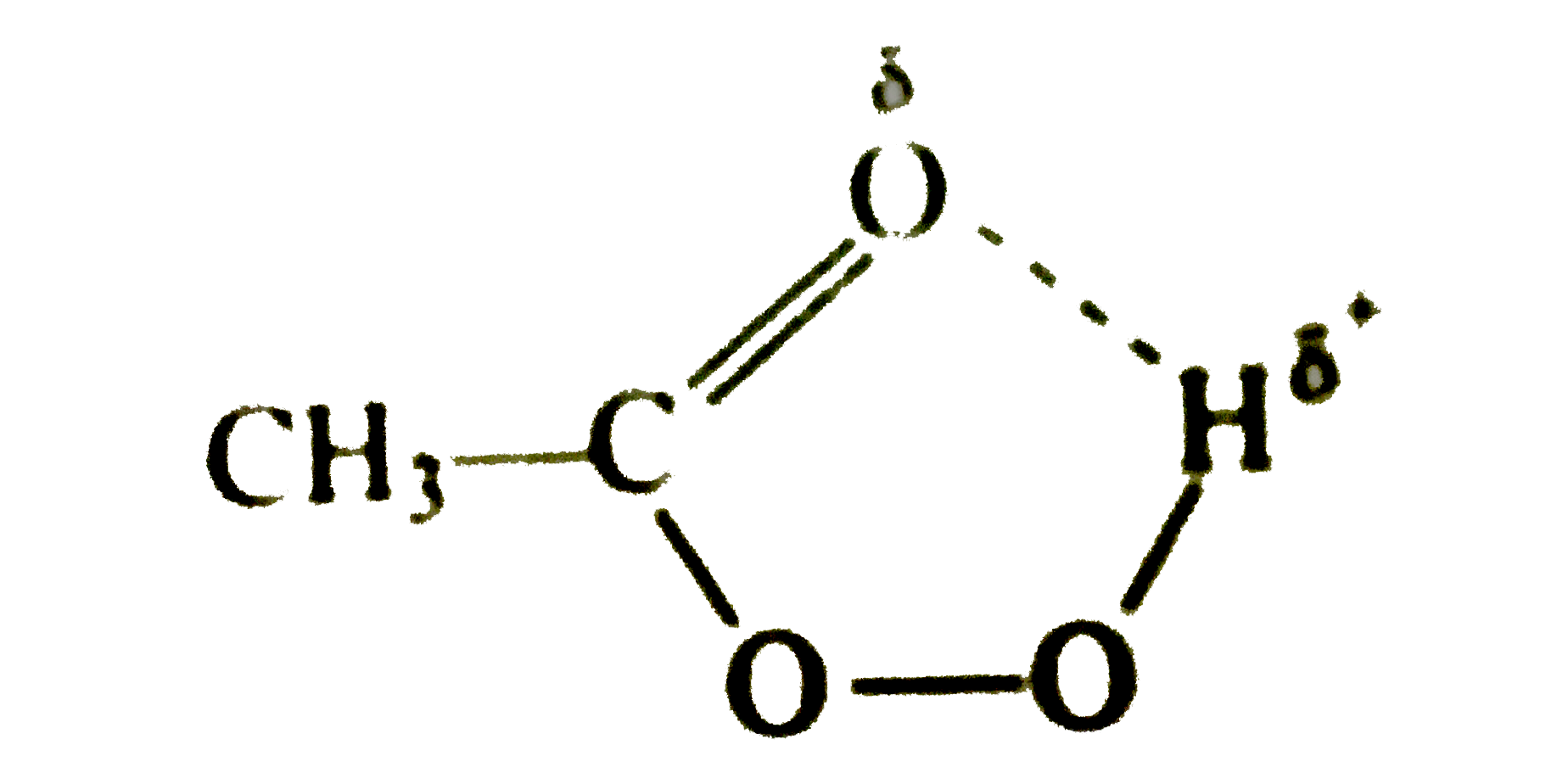NH3 molecules remain associated through intermolecular hydrogen bonding but there is not such association among HCl molecules even though electronegativities of N and Cl are the same explain
Although the electronegativities of nitrogen and chlorine are same, nitrogen can form hydrogen bond but Cl cannot. This is because N-atom is much smaller than Cl-atom. Due to large size of Cl-atom, the electrostatic attraction between Cl-atom of one molecule and H-atom of another molecule becomes weak. hence, Cl does not form hydrogen bonds while NH3 molecules undergoes association by intermolecular hydrogen bonds.
Topper's Solved these Questions
- BOOK - CHHAYA PUBLICATIONCHAPTER - CHEMICAL BONDING AND MOLECULAR STRUCTUREEXERCISE - QUESTIONS-ANSWER ZONE FOR BOARD EXAMINATION72videos
CHEMICAL BONDING AND MOLECULAR STRUCTURE
- BOOK - CHHAYA PUBLICATIONCHAPTER - CHEMICAL BONDING AND MOLECULAR STRUCTUREEXERCISE - SOLVED WBCHSE SCANNER40videos
CHEMICAL BONDING AND MOLECULAR STRUCTURE
- BOOK - CHHAYA PUBLICATIONCHAPTER - CHEMICAL BONDING AND MOLECULAR STRUCTUREEXERCISE - PRACTICE SET10videos
CHEMICAL BONDING AND MOLECULAR STRUCTURE
- BOOK - CHHAYA PUBLICATIONCHAPTER - CLASSIFICATION OF ELEMENTS & PERIODICITY IN PROPERTIESEXERCISE - PRACTICE SET12videos
CLASSIFICATION OF ELEMENTS & PERIODICITY IN PROPERTIES
Similar Questions
Calculate the percentage of ionic character in Cs−Cl bond in CsCl molecule. The electronegativity values of CS and Cl are 0.7 and 0.3 respectively.
View SolutionCalculate the percentage of ionic character in Cs−Cl bond in CsCl molecule. The electronegativity values of Cs and Cl are 0.7 and 3.0 respectively.
View Solution
Knowledge Check
- Question 1 - Select One
In Which of the following compound are intermolecular hydrogen bonds not formed among its molecules .
ACH3CH2NH2B(CH3CH2)2NHC(CH3CH2)3NDBoth (2) and (3) - Question 2 - Select One
Assertion : Boiling point of p-nitrophenol is greater than that of o-nitrophenol.
Reason : There is intramolecular hydrogen bonding in p-nitrophenol and intermolecular hydrogen bonding in o-nitrophenol.AIf both assertion and reason are true and the reason is the correct explanation of the assertionBif both assertion and reason are true but reason is not the correct explanation of the assertionCif assertion is true but reason is falseDif assertion is false but reason in true. - Question 3 - Select One
The percentage ionic characterin Cs−Cl bond present in CsCl molecule will, be, if the electronegativities for Cs and Cl are 0.8and3.0, respectively
A62.9%B60%C75%D52.14%
Assertion (A) : Ortho and para-nitrophenol can be separated by steam distillation.
Reason (R ) : Ortho isomer associates through intermolecular hydrogen bonding while para isomer associated through intermolecular hydrogen bonding.View SolutionThe hydrogen bond is an electrostatic attractive force between covalently bonded hydrogen atom of one molecule and an electronegative atom like (F,O,N) of other molecule. Hydrogen bond is nearly an electrostatic attractive force and not a normal chemical bond. It is very weak (2-10 kcal/mol) as compared to a colvent bond (strength 50-100 kcal/mol). In intramolecular hydrogen bonding, the two or more than two molecules of the same or different substances are linked to form polymeric aggregate. Intermolecular hydrogen bonding increases the boiling point of the compound and also its solubility in water. Intramolecular hydrogen bonding occurs within two atoms of the same molecule. Intramolecular hydrogen bonding is also called chelation, since it involves ring formation. intramolecular hydrogen bonding decreases the boiling point of the compound and also its solubility in water.
Which among the following has lowest boiling point?View SolutionThe hydrogen bond is an electrostatic attractive force between covalently bonded hydrogen atom of one molecule and an electronegative atom like (F,O,N) of other molecule. Hydrogen bond is nearly an electrostatic attractive force and not a normal chemical bond. It is very weak (2-10 kcal/mol) as compared to a colvent bond (strength 50-100 kcal/mol). In intramolecular hydrogen bonding, the two or more than two molecules of the same or different substances are linked to form polymeric aggregate. Intermolecular hydrogen bonding increases the boiling point of the compound and also its solubility in water. Intramolecular hydrogen bonding occurs within two atoms of the same molecule. Intramolecular hydrogen bonding is also called chelation, since it involves ring formation. intramolecular hydrogen bonding decreases the boiling point of the compound and also its solubility in water.
Which of the following molecules is dimerised when dissolved in non-polar or organic solvent?View SolutionThe hydrogen bond is an electrostatic attractive force between covalently bonded hydrogen atom of one molecule and an electronegative atom like (F,O,N) of other molecule. Hydrogen bond is nearly an electrostatic attractive force and not a normal chemical bond. It is very weak (2-10 kcal/mol) as compared to a colvent bond (strength 50-100 kcal/mol). In intramolecular hydrogen bonding, the two or more than two molecules of the same or different substances are linked to form polymeric aggregate. Intermolecular hydrogen bonding increases the boiling point of the compound and also its solubility in water. Intramolecular hydrogen bonding occurs within two atoms of the same molecule. Intramolecular hydrogen bonding is also called chelation, since it involves ring formation. intramolecular hydrogen bonding decreases the boiling point of the compound and also its solubility in water.
Select the compound which involves intramolecular hydrogen bonding.
 View Solution
View SolutionThe hydrogen bond is an electrostatic attractive force between covalently bonded hydrogen atom of one molecule and an electronegative atom like (F,O,N) of other molecule. Hydrogen bond is nearly an electrostatic attractive force and not a normal chemical bond. It is very weak (2-10 kcal/mol) as compared to a colvent bond (strength 50-100 kcal/mol). In intramolecular hydrogen bonding, the two or more than two molecules of the same or different substances are linked to form polymeric aggregate. Intermolecular hydrogen bonding increases the boiling point of the compound and also its solubility in water. Intramolecular hydrogen bonding occurs within two atoms of the same molecule. Intramolecular hydrogen bonding is also called chelation, since it involves ring formation. intramolecular hydrogen bonding decreases the boiling point of the compound and also its solubility in water.
Which of the following compounds is (are) stabilised by intramolecular hydrogen bonding?View Solution

